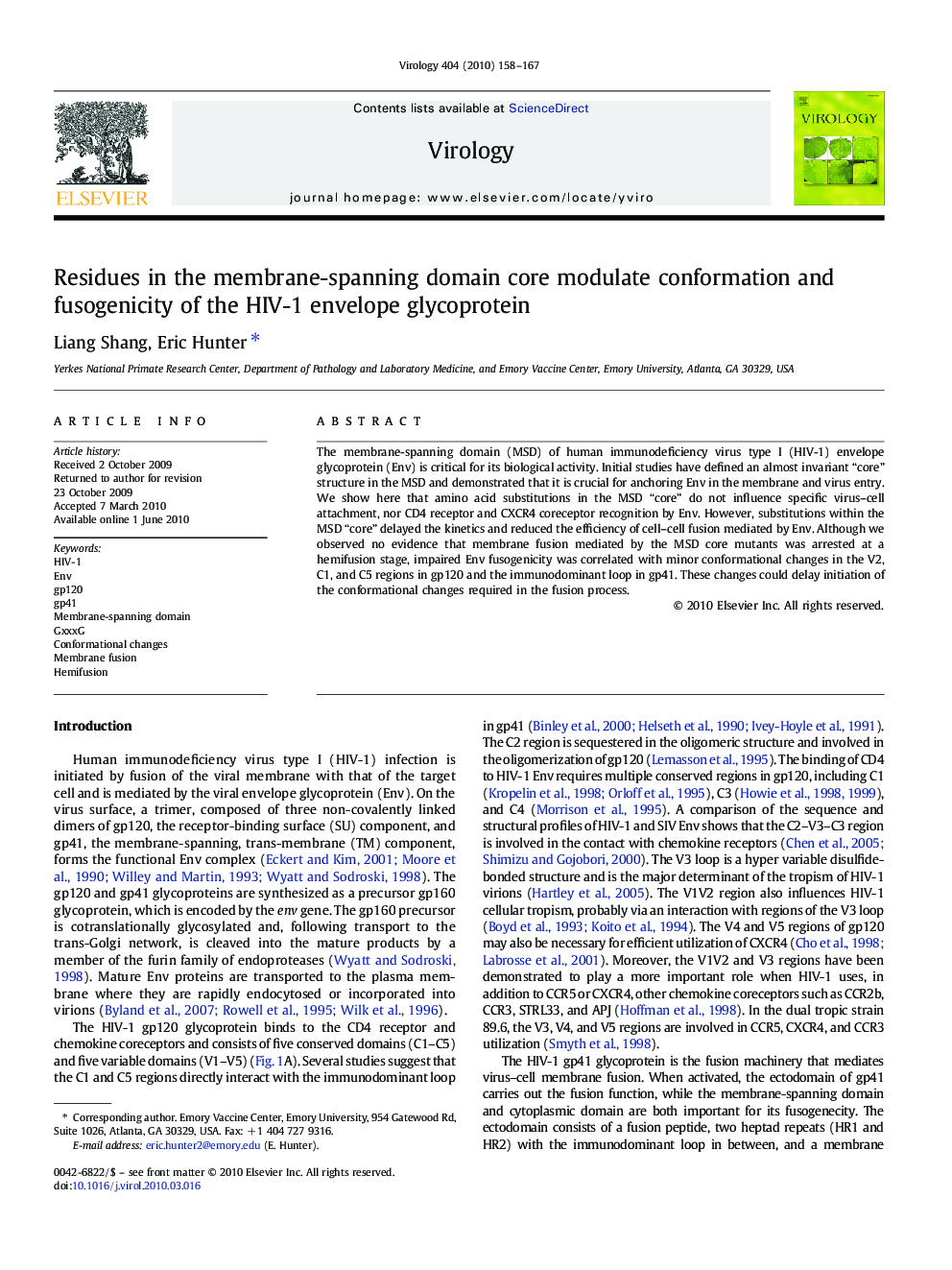| Article ID | Journal | Published Year | Pages | File Type |
|---|---|---|---|---|
| 3424905 | Virology | 2010 | 10 Pages |
The membrane-spanning domain (MSD) of human immunodeficiency virus type I (HIV-1) envelope glycoprotein (Env) is critical for its biological activity. Initial studies have defined an almost invariant “core” structure in the MSD and demonstrated that it is crucial for anchoring Env in the membrane and virus entry. We show here that amino acid substitutions in the MSD “core” do not influence specific virus–cell attachment, nor CD4 receptor and CXCR4 coreceptor recognition by Env. However, substitutions within the MSD “core” delayed the kinetics and reduced the efficiency of cell–cell fusion mediated by Env. Although we observed no evidence that membrane fusion mediated by the MSD core mutants was arrested at a hemifusion stage, impaired Env fusogenicity was correlated with minor conformational changes in the V2, C1, and C5 regions in gp120 and the immunodominant loop in gp41. These changes could delay initiation of the conformational changes required in the fusion process.
